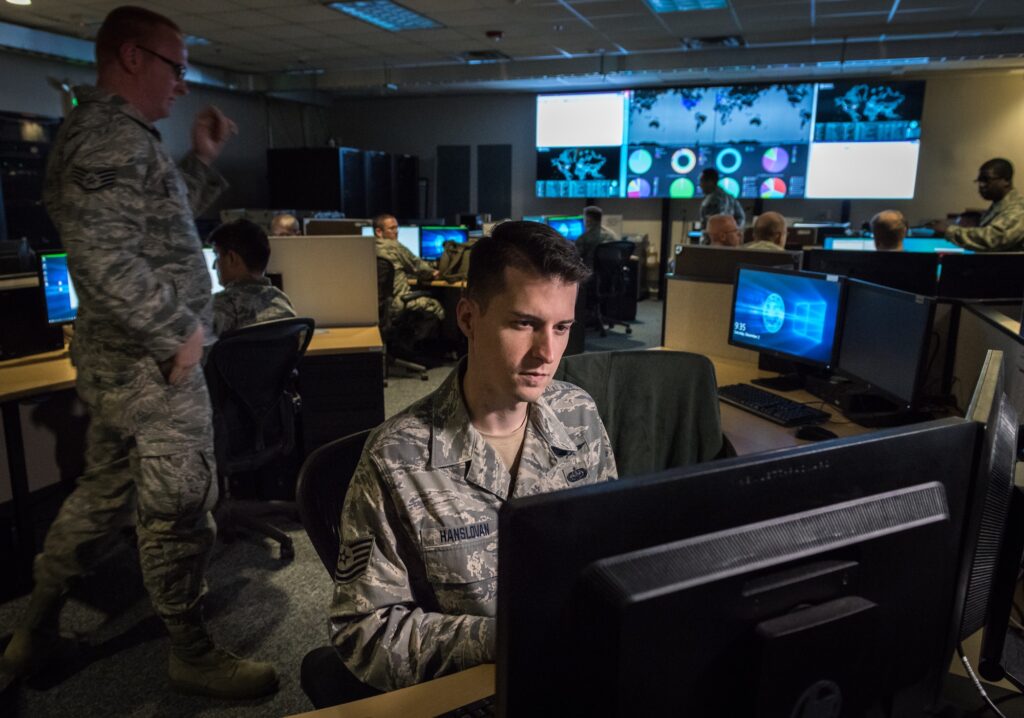This article explores the intersection of cybersecurity and military operations in today’s digital age. With the increasing reliance on technology in the military domain, cyber threats have become a significant concern. State-sponsored hackers, terrorist organizations, and cybercriminals can exploit vulnerabilities in military networks and weapon systems. To counter these threats, military organizations worldwide are prioritizing cybersecurity measures, including network security, encryption, and incident response plans. However, operating in the cyber battlefield presents challenges such as the evolving nature of cyber threats, attribution and response complexities, and the scarcity of skilled cybersecurity personnel. To prepare for future cyber warfare, investments in research and development, continuous training, and international cooperation are essential. By addressing these challenges, military organizations can safeguard their critical infrastructure and adapt to the complexities of the digital age.
Unveiling the Cyber Battlefield: The Intersection of Cybersecurity and Military Operations
Introduction
In today’s digital age, the world is becoming increasingly interconnected, with virtually every aspect of our lives being reliant on computers and the internet. While this connectivity has brought tremendous benefits to society, it has also opened up new avenues for threats and attacks. One such arena where the significance of cybersecurity cannot be overstated is the military domain. The intersection of cybersecurity and military operations has become a critical front in modern warfare. This article aims to explore the complexities and challenges of this cyber battlefield.
The Rise of Cyber Threats in Military Operations
With the rapid digitization of military infrastructure, the number and complexity of cyber threats have increased exponentially. Today’s militaries rely heavily on interconnected networks, integrated command and control systems, and advanced weapon systems. This reliance on technology has made them vulnerable to cyber attacks that can disrupt critical operations, compromise sensitive data, and even disable essential infrastructure.
Cyber threats can come from various sources, including state-sponsored hackers, terrorist organizations, and cybercriminals. These adversaries may seek to exploit vulnerabilities in military networks, weapon systems, or communication channels to gain a strategic advantage or cause chaos within the targeted military.
The Importance of Cybersecurity in Military Operations
Recognizing the growing importance of cybersecurity, military organizations worldwide are placing significant emphasis on developing robust defenses and proactive strategies to counter cyber threats. Effective cybersecurity measures are essential to protecting military assets, ensuring operational continuity, and safeguarding the integrity of sensitive information.
Implementing a comprehensive cybersecurity framework in military operations involves several key components. These include network security, encryption, access controls, incident response plans, continuous monitoring, and threat intelligence sharing. By integrating cybersecurity into military operations, military organizations can detect, prevent, and mitigate cyber attacks, minimizing the potential impact on military readiness and the national security of a nation.
The Challenges of the Cyber Battlefield
Operating in the cyber battlefield presents its own set of unique challenges. One such challenge is the ever-evolving nature of cyber threats. Adversaries are constantly adapting their techniques, making it essential for military organizations to stay one step ahead by investing in ongoing research, training, and technological advancements.
Additionally, attribution and response to cyber attacks can be complex. Determining the origin of an attack and effectively responding to it without escalating conflict or breaching international laws can be challenging. The anonymous nature of cyberspace also complicates the identification of attackers, indicating a need for international cooperation and agreed-upon norms to address cyber warfare effectively.
Cybersecurity operations also require highly skilled personnel. The scarcity of cybersecurity experts and the competition for their recruitment pose a significant challenge for military organizations. Training and retaining cyber personnel become critical factors in maintaining a robust cybersecurity workforce capable of countering emerging threats.
Preparing for Future Cyber Warfare
In recognition of the evolving cybersecurity landscape, military organizations must prioritize investments in research and development. This involves fostering collaboration between government agencies, academia, and the private sector to develop innovative technologies and solutions that can identify, thwart, and recover from cyber attacks.
Continuous cybersecurity training and exercises are integral to preparing military personnel for the cyber battlefield. Simulations and war games can enhance their abilities to respond to cyber threats effectively. Cross-disciplinary training programs that combine traditional military tactics with cybersecurity skills can help develop a new generation of professionals capable of operating in this unique warfare domain.
Furthermore, international cooperation and information sharing are crucial in addressing the global nature of cyber threats. Establishing alliances between nations to exchange threat intelligence, share best practices, and develop joint strategies can ensure a collective defense and foster a safer cyber environment for military operations worldwide.
Conclusion
Cybersecurity has emerged as a critical component of modern military operations. As reliance on digital infrastructure grows, the cyber battlefield becomes an ever more vital arena. To counter the evolving threat landscape, military organizations must invest in robust cybersecurity measures, nurture a skilled workforce, and foster international cooperation. By doing so, they can safeguard their critical infrastructure, maintain operational readiness, and adapt to the challenges of the digital age.
